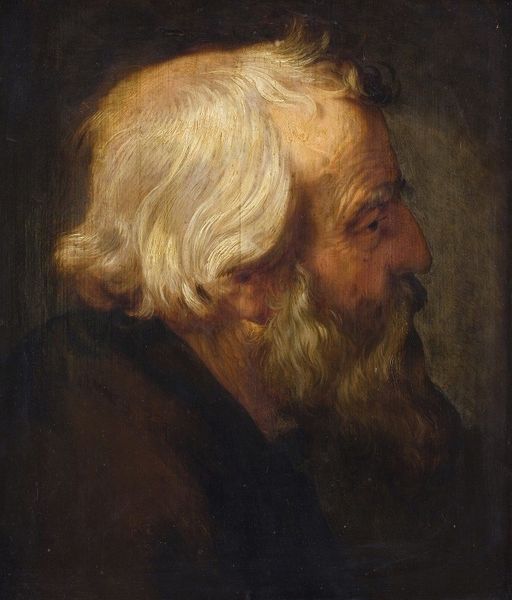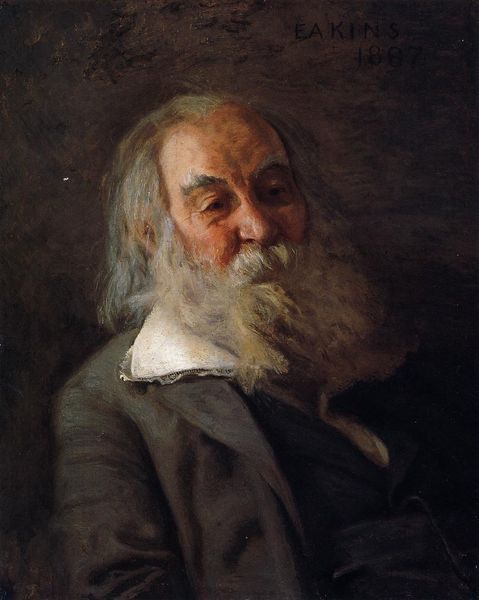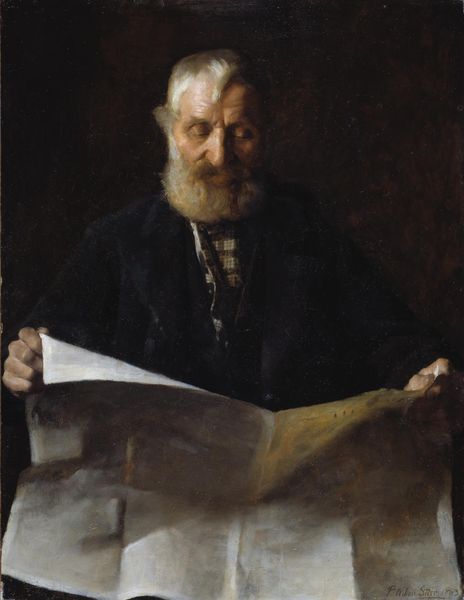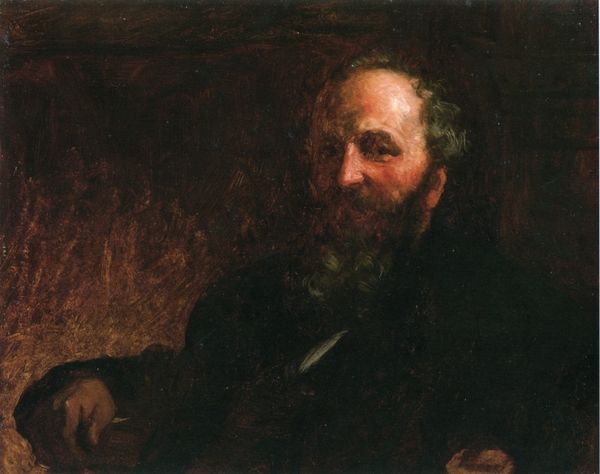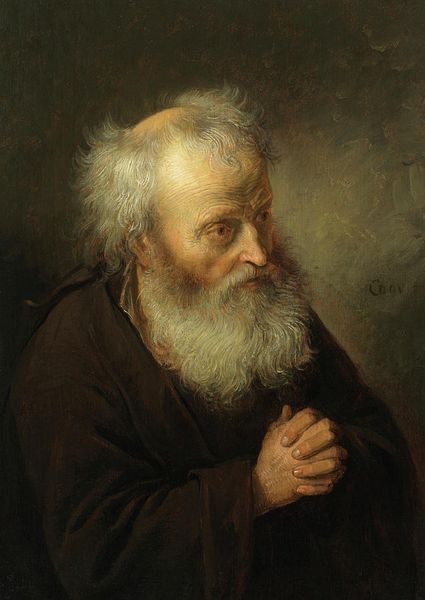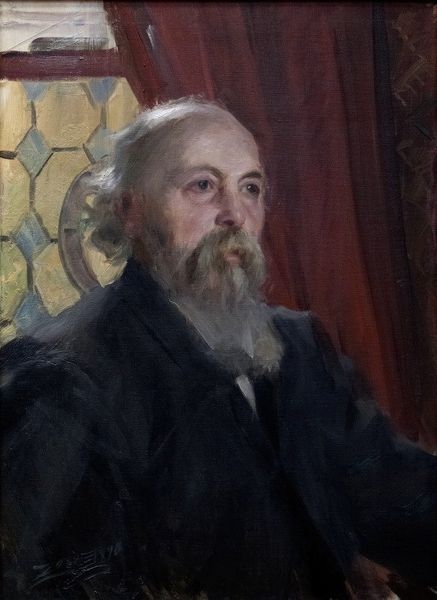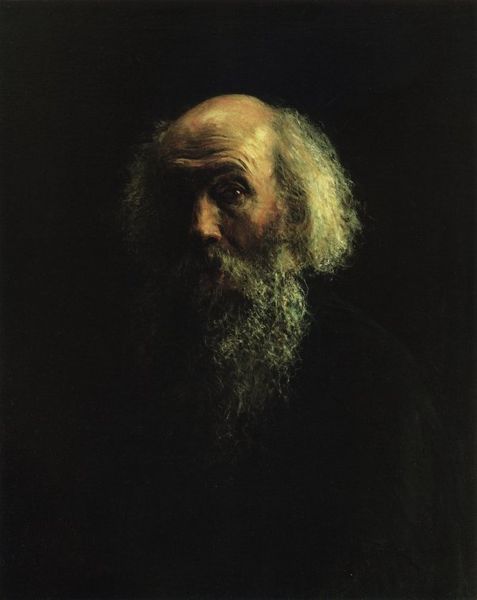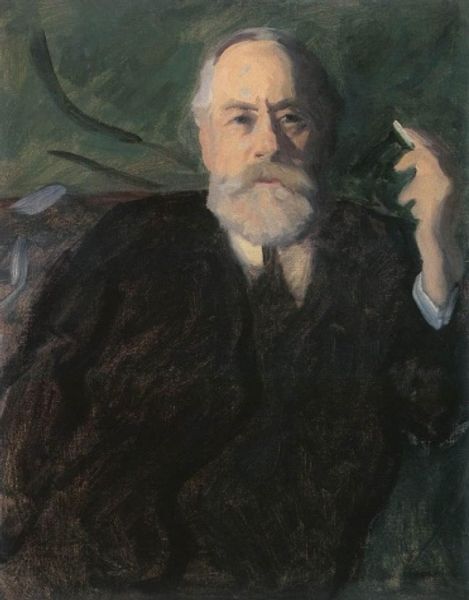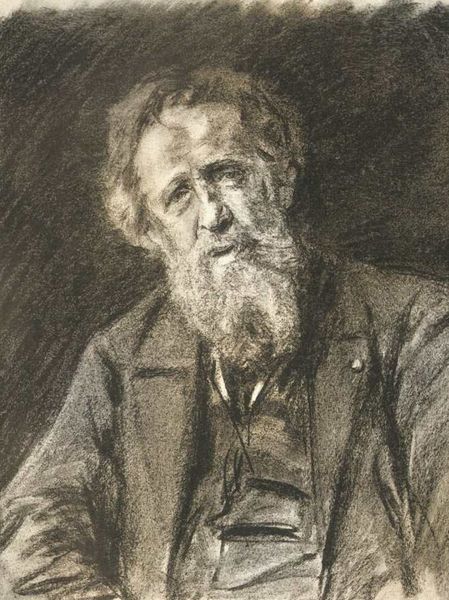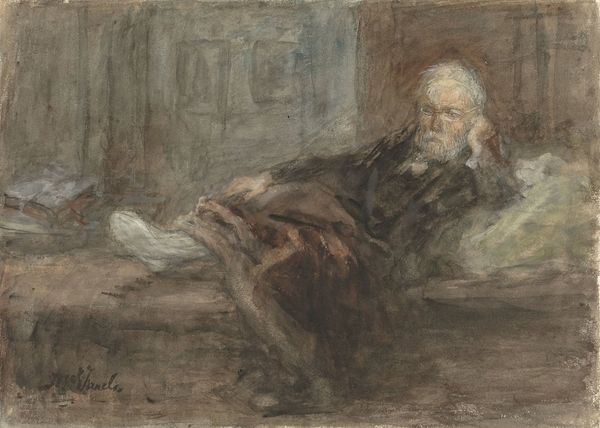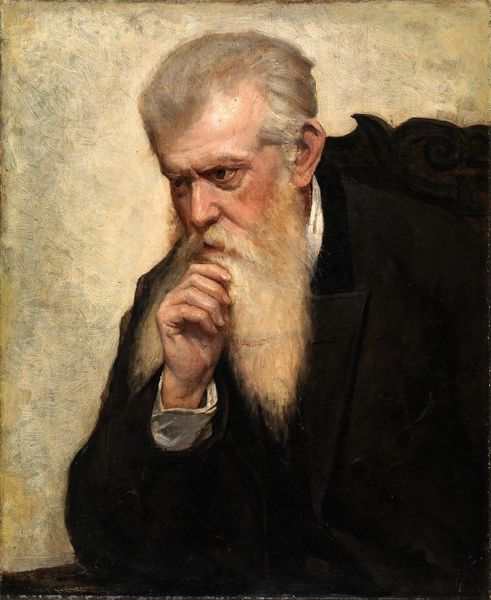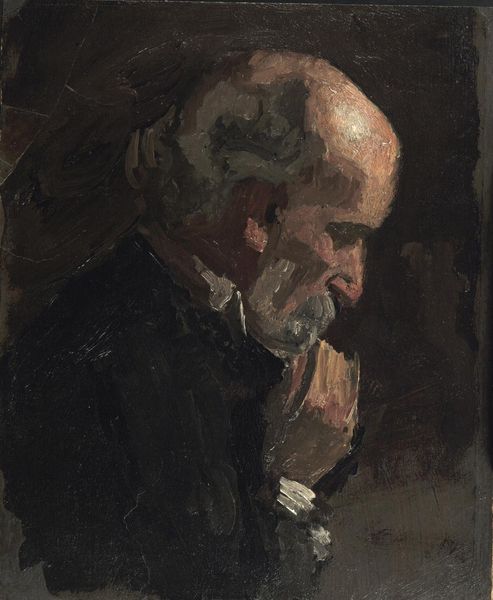
Portret van Ds Petrus Hermannus Hugenholtz (1834-1911), oprichter van de Vrije Gemeente 1908
0:00
0:00
janveth
Rijksmuseum
#
charcoal drawing
#
portrait reference
#
portrait head and shoulder
#
animal drawing portrait
#
portrait drawing
#
facial study
#
facial portrait
#
portrait art
#
fine art portrait
#
digital portrait
Dimensions: height 82.5 cm, width 65 cm, depth 6.5 cm
Copyright: Rijks Museum: Open Domain
Curator: Standing before us is Jan Veth’s 1908 portrait of Ds Petrus Hermannus Hugenholtz. It commemorates the founder of the Vrije Gemeente, an independent religious community. Editor: There’s such a quiet thoughtfulness radiating from the subject. The slightly downturned gaze, the hand supporting his head…it suggests a profound inner life. Curator: The Vrije Gemeente was indeed a significant movement at the time, emphasizing individual interpretation and freedom of thought. Veth's choice to depict Hugenholtz in such a pensive manner could very well underscore these values. Editor: Absolutely, and the medium – presumably charcoal or a similar soft material – contributes to that gentle quality. There’s a lack of harsh lines; everything seems to blend subtly. It's almost as if we are seeing an echo of his internal reflections through the image itself. What could a man dedicated to questioning authority, must really be mulling over? Curator: Interesting thought! And observe how Veth subtly conveys the sitter's age and experience. The lines etched on his face, the slightly weary expression… they all speak of a life dedicated to intellectual and perhaps even spiritual labor. The weight of founding such a movement…the debates… Editor: And it looks almost informal. It could convey a sense of approachability and empathy as important pillars in his role. Curator: A striking point! It seems like Veth aims for a kind of intimate portrait, humanizing him rather than presenting an austere, detached leader. Editor: Which is particularly resonant considering his progressive religious beliefs. There’s a democratizing element in the composition itself. I wonder what viewers at the time felt seeing such a portrait of their leader? Curator: I’d suggest it challenged conventional notions of religious authority. Perhaps even reflected the broader societal shifts toward questioning tradition that were gaining traction during that era. It certainly gives insight on how the subject of the painting intended to influence and be seen. Editor: Indeed, an image designed to subtly influence the sitter's perceived image. Thanks to Veth's craft, we can now experience that intent. Curator: Precisely, another facet to consider when exploring this intriguing artwork.
Comments
No comments
Be the first to comment and join the conversation on the ultimate creative platform.
